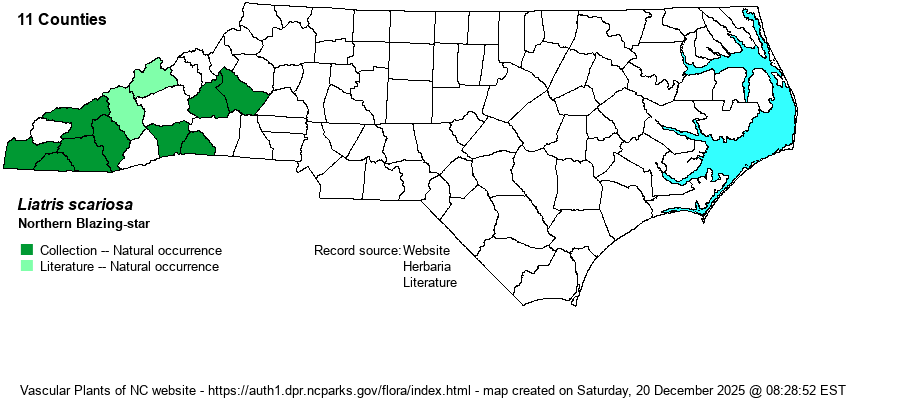| Author | (L.) Willdenow | |
| Distribution | Southern Mountains and adjacent Piedmont foothill ranges. Specimens from farther east are misidentifications.
A central and southern Appalachian endemic; PA and WV south to NC and TN. | |
| Abundance | Rare to locally uncommon. This is a Watch List species. | |
| Habitat | Dry rock outcrops, open rocky woodlands, roadside banks; primarily if not strictly limited to high pH soils. | |
| Phenology | Flowering and fruiting August-September. | |
| Identification | Blazing-stars typically have single unbranched stems, many slender leaves, and a terminal spike-like inflorescence of disk florets only. They grow from very hard, roundish, underground corms. Northern Blazing-star grows 1-2.5 feet tall, the lower leaves are narrowly elliptic to oblanceolate (broader towards the tip) and stalked, and the middle and upper leaves abruptly narrower, shorter, and stalkless. The heads are stalked, broad, have 19-33 pink-purple florets, and occur all around the stem. The involucral bracts are smooth and blunt-tipped. It is most similar to L. aspera, but that species has essentially stalkless heads (stalk under 5 mm long vs. greater than 8 mm long). This is a rather distinctive species, with the quite large heads on distinct stalks. | |
| Taxonomic Comments | The taxon found in NC is the nominate variety.
| |
| Other Common Name(s) | Savanna Blazing-star (a very misleading name!), Large Blazing-star | |
| State Rank | S2 | |
| Global Rank | G5? | |
| State Status | W7 [W1] | |
| US Status | | |
| USACE-agcp | UPL link |
| USACE-emp | FACU link |

